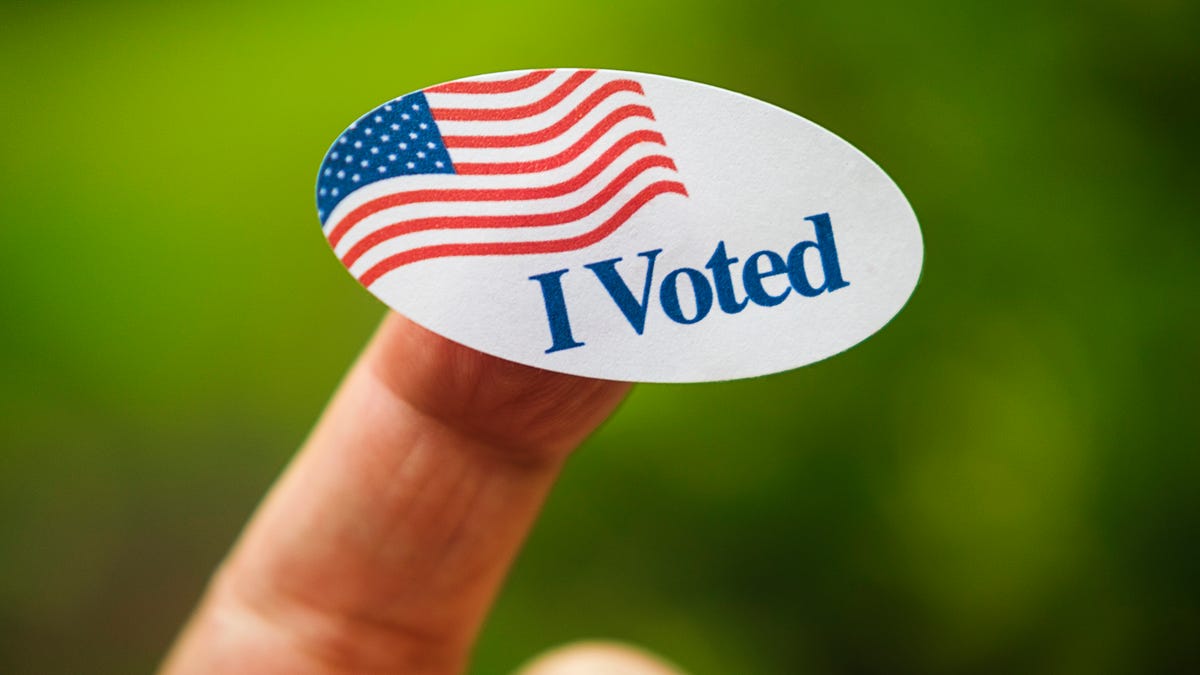Election Day 2022: What to Know Before You Vote
Find out if you can still register to vote, where your polling place is and more.

Find out if your state has same-day registration.
Election Day is Tuesday, Nov. 8. The midterms are crucial, as millions of Americans will vote for local, state and federal officials and weigh in on important referendums in their communities.
If you haven't registered to vote, there might still be time: Twenty-two states and the District of Columbia have same-day registration, which allows any qualified resident to register and cast a ballot at the same time.
Below, find out if your state has same-day registration. Plus, learn where your local polling place is, how to track a mail-in ballot and more.
For more on voting, find out what your voting rights are and the threat gerrymandering poses to democracy.
Can I still register to vote?
In a majority of states, voter registration closes well before Election Day -- in some cases up to 30 days before.
In 20 states, though, you can both register and vote on Election Day, according to the National Conference of State Legislatures. (In Virginia, same-day registration just went into effect on Oct. 1.)
Two states, Montana and North Carolina, allow same-day registration -- but only during a portion of the early voting period, not on Election Day.
Alaska and Rhode Island only allow same-day registration during presidential elections.
If you still haven't registered, find out if it's not too late.
Where is my polling place?
Even if you've voted before, it's worth double-checking where your polling place is: States have redrawn their political maps with data from the 2020 Census, and your district may have changed.
Does my state have early voting?
All but four states -- Alabama, Connecticut, Mississippi and New Hampshire -- allow for early voting, either in person or by mail. (California, Colorado, Hawaii, Nevada, Oregon, Utah, Vermont and Washington mail a ballot to every registered voter.)
The deadlines vary, so find your state's early-voting deadline here.
How can I track my mail-in ballot?
Most states let you track your mail-in ballot online, but there's not one uniform method: Some states use BallotTrax, while others rely on the US Postal Service or have their own unique system in place.
You may need to enter your name, date of birth or other personal information: Get more details on tracking your mail-in ballot here.
Is Election Day a federal holiday?
Election Day isn't a federal holiday, though several states -- including Illinois, New York and West Virginia -- have classified Election Day as a state holiday, with employers required to give workers time off for voting.
Last year, Rep. Anna Eshoo, a Democrat from California, introduced the Election Day Holiday Act, and Sen. Amy Klobuchar, a Democrat from Minnesota, sponsored the Freedom to Vote Act. Both measures would make Election Day a federal holiday but neither has advanced since being introduced.
President Joe Biden has supported making Election Day a federal holiday.
"If I had my way, every Election Day would be a day off because people who work certain shifts can't make it to the election," Biden said in a June 2021 press briefing.
Why is Election Day always on a Tuesday?
In the US, Election Day is always on the Tuesday after the first Monday in November -- essentially, between Nov. 2 and Nov. 8.
The Constitution doesn't stipulate when Election Day should be. In fact, in the early 1800s, people might have voted anytime from April to December.
With the advent of the telegraph and the railroad, though, Congress decided in 1845 to establish a single day for voting. Lawmakers chose November, because the fall harvest would have been completed, but it would have still been warm enough to travel. Tuesday was selected because it gave farmers enough time to start out after the Sunday sabbath and make it back home in time for market days on Wednesdays. (In many places, the nearest polling place would have been in the county seat -- a journey of many miles for rural residents.)
Election Day was specified as the Tuesday "after the first Monday" -- rather than the first Tuesday -- to ensure it wouldn't fall on All Saints' Day, a Christian holiday, according to Encyclopedia Britannica. Also, many merchants used the first of the month to square accounts from the previous month.
The uniform date was initially limited to presidential elections, but eventually, other federal, state and local races were brought in line as well.

